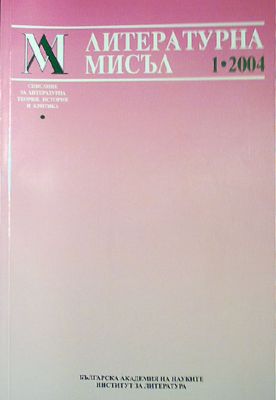"Научи ме да се смея, спаси душата ми": роли на готическия смях
‘Teach Me Laughter, Save My Soul’: Roles of Gothic Laughter
Author(s): Ognyan KovachevSubject(s): Literary Texts
Published by: Институт за литература - БАН
Keywords: literary works belonging to the British Gothic Revival (1764–1820)
Summary/Abstract: The kind of laughter that I call gothic is to be heard or produced primarily in literary works belonging to the British Gothic Revival (1764–1820). The peculiarities of such laughing are result of its paradoxical amalgamation with fear. Due to this mixed character it is akin to the dark romantic grotesque described by Wolfgang Kayser and Mikhail Bakhtin. Within the uncanny mixture of joy and grief, of laughing and crying, I differentiate a variety of roles played by the gothic laughter. We can observe the humour of the servants in Walpole’s and Radcliffe’s novels, the rebellious humour of the Freudian super-ego, the daemonic or Satanic laughter of Maturin’s Melmoth, the laughter caused by automated bodies, mechanical or ghost simulacra in M. G. Lewis’s The Monk and E. T. A. Hoffmann’s Der Sandman. In the analysis are applied concepts from theories of laughter by Baudelaire, Henry Bergson, Freud, and Helmuth Plessner. Self-reflective and eccentrically positioned, gothic laughter is a symptom of painful personal self-observation and self-knowledge, as well as of the insuperable cognitive, aesthetic and existential anxieties.
Journal: Литературна мисъл
- Issue Year: 2004
- Issue No: 1
- Page Range: 77-87
- Page Count: 11
- Language: Bulgarian
- Content File-PDF

